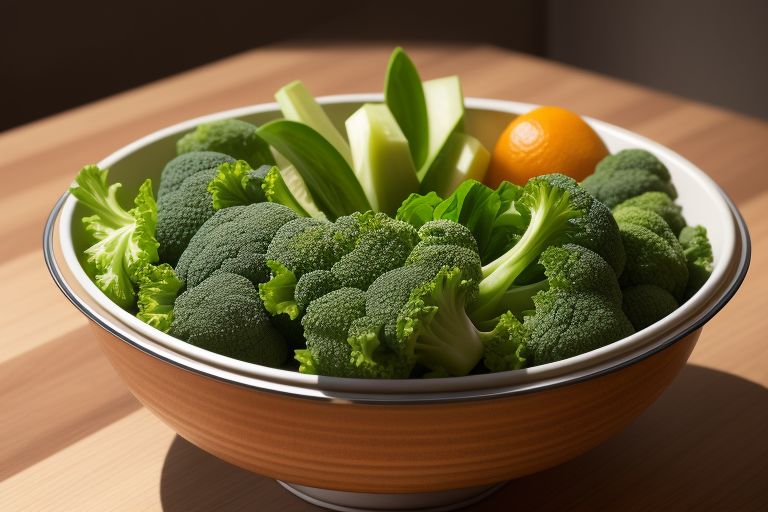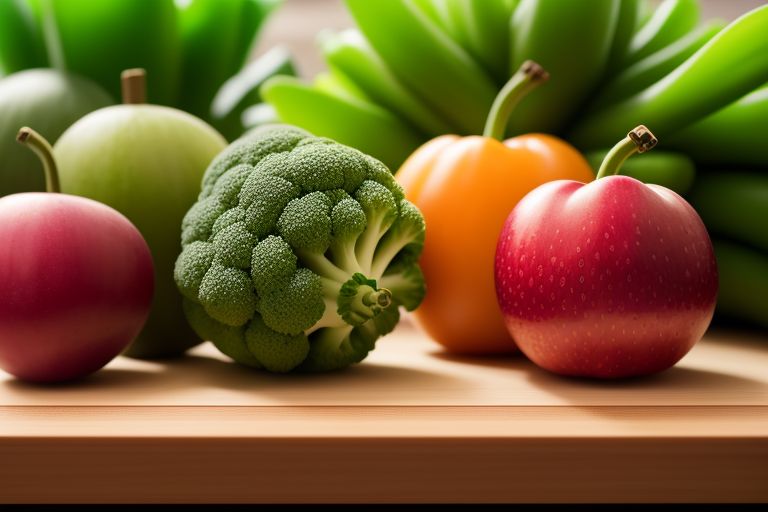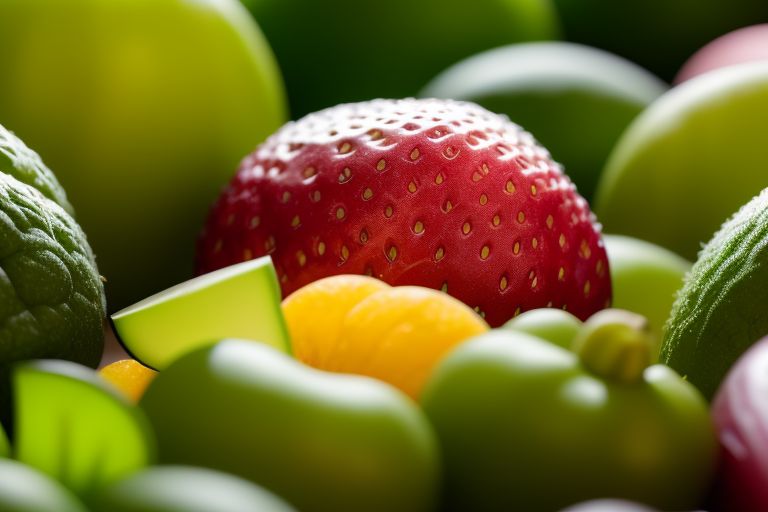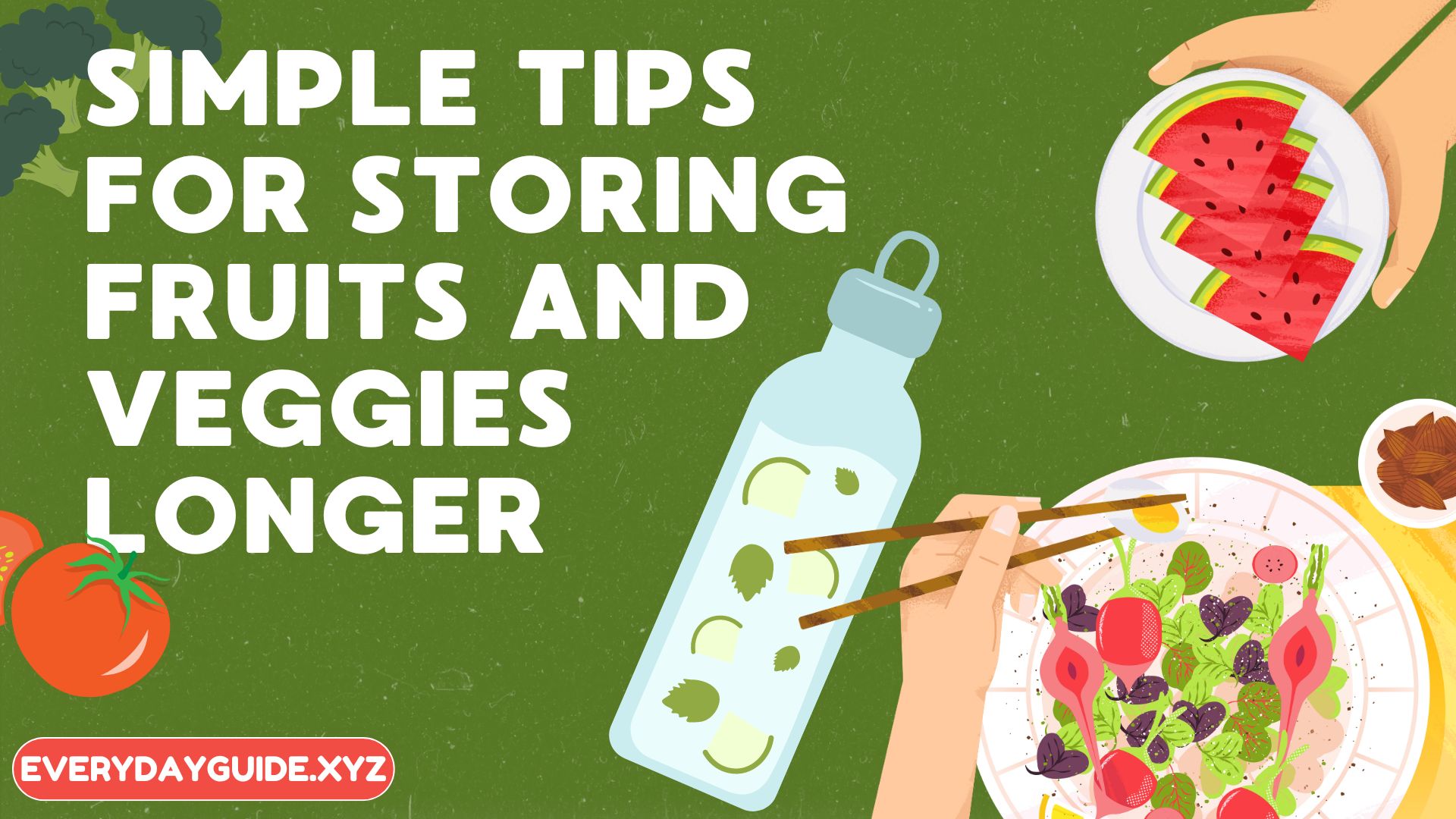Storing fruit and vegetables the right way can prevent them from going bad too fast and help to make them last longer. When properly processed and stored, you can also make fresh produce last longer at home, contributing to less food waste. This guide is packed with easy and practical ways to store your fruit and veg, preserving their freshness at the same time as maintaining their yummy-factor.
Being taught the proper way to store your fruits and veggies not only save you money but also having healthy fresh produce at home whenever you want it, is quite wonderful. If you want to ensure your food storage is everything it should be, this guide has all the must-knows from how best to store stuff; to which practical prep techniques work well.
What is Storage conditions
Different types of produce require different storage conditions to help them last longer. Storage when done the right way can preserve your food from spoiling and keeps its nutritional profile unchanged. What You Should Know Before Handing Over the Environment of Your Produce
The Impact of Temperature on Food Preservation

The temperature is the most important key to keeping fruits and greens from turning into stinky science projects. Different types of produce need different temperature conditions to stay fresh:
Refrigeration: Most fruits and vegetables tend to last longer when refrigerated. The cold moderate the ripening and keep spoilage at bay. Examples of some of what you might find in most refrigerators: berries, leafy greens, carrots
Room Temp :Fresh fruit and vegetables in the early stages of ripening, or that need time to cure. Tomatoes and avocados, for instance, turn riper without refrigeration. When they are mature, you can store them in the refrigerator to keep them longer.
Dry Store in Cool Place: Some produce including potatoes and onions should be stored in a cool, dry place. Sprouting and spoilage: Moisture, warmth and exposure cause the seeds to sprout or rot, neither of which are desirable.
How Changing the Humidity Helps Keep Your Fruits and Vegetables Fresh
High and low humidity conditions can have a marked effect on how well your produce stays fresh. To Store At Its Best, Keep Humidity In Check!
Vegetables Like: lettuce, celery – high humidity Turn to the crisper drawers or plastic bags with tiny holes in them to help the vegetables stay moist without rotting.
Fruits are perfect examples of this compartmentalization with low humidity fruits (i.e. apples, pears) being more difficult to store in a high humidity environment as the excess moisture present can also lead to spoilage and mold. Perforated bags or containers work well to retain moisture levels optimal.
Fresh Air Flow- whether you are in a high or low humidity area, allowing air to flow out is important. Air out any storage spaces to prevent moisture and gasses from accumulating, which will reduce spoilage.
Common Fruits: Storage for Everyday Use

Each fruit needs to be stored in different ways in order that they do not get spoiled and we also enjoy the fruits. Fruit storage hack for common fruits
Apples
Refrigeration: Refrigerate apples to keep them cool and fresh for several weeks. Either put them in the crisper drawer or a punctured plastic bag
Store Away from Ethylene Producers: Where you store your apples aside, try to keep them in a spot where they’re not too close to other fruits that produce ethylene gas as this causes rapid ripening and decay.
Berries
Cold Storage – Berries (such as strawberries, blueberries, and raspberries) should be stored in the refrigerator. Leave them in their original container or a container that allows some air to come through so that they do not get damp and begin breeding bacteria.
Do not wash berries until it is time to eat them. Too much moisture will cause them to spoil sooner or begin to rot, leading eventually to the growth of mold.
Citrus Fruits
At Room Temperature: Citrus fruits such as oranges, lemons and limes can be kept on the table for up to a week. Store them in fridge for a few days or up to 1 week.
Store in a well-ventilated fruit bowl or mesh bag to help keep them fresh and reduce the chance of mould developing.
Vegetable storage methods that work

The process of keeping vegetables fresh and nutrient-packed are the proper storage techniques. Here is how you can store some commonly used veggies efficiently:-
Leafy Greens
Refrigeration — Spinach and kale-type leafy green vegetables:uitka Cover and keep the roots damp, but not wringing wet, with dry air using aperforated plastic bag or container.
Keep Fresh: Leafy greens are best kept fresh so don’t wash your produce just yet. Wash them just before use.
Root Vegetables
Dark, cool place: Store root vegetables like carrots, potatoes and beets in a dark, cool place such as a pantry or cellar. Store them in a breathable container to avoid the development of mold and sprouting.
No moisture: scrub root veggies well and let them dry before storing so they will not rot. Keepthem away from other ethylene producing fruits
Cruciferous Vegetables
Vegetables: All other vegetables, such as broccoli, cauliflower and brussels sprouts, should be refrigerated. To inhibit spoilage and maintain crisp, zip collards within a perforated plastic bag or open container in the fridge.
Use ASAP: The flavor and texture of cruciferous vegetables are significantly better within a few days of purchase.
Food preservation techniques
Other than storage, preserving your fruit and veg can also be key to making them last longer. Some Useful Ways To Promote Your Website
Also Read More:
- 9 Simple Strategies for Handling Tantrums on the Go
 Spending time with your family is a rare opportunity to improve this bond, memorize and have quality moments together. On the other hand shooting these moments and making them fun for everyone is a challenge. Regardless of whether you have infants,… Read more: 9 Simple Strategies for Handling Tantrums on the Go
Spending time with your family is a rare opportunity to improve this bond, memorize and have quality moments together. On the other hand shooting these moments and making them fun for everyone is a challenge. Regardless of whether you have infants,… Read more: 9 Simple Strategies for Handling Tantrums on the Go - 10 Easy Ways to Make Family Time More Fun
 Dealing with tantrums as a parent can be difficult to manage at home. However, public temper tantrums may seem an entirely different variety. This is especially challenging when tantrums occur on-the-go: while running errands, driving to a destination, or shopping in… Read more: 10 Easy Ways to Make Family Time More Fun
Dealing with tantrums as a parent can be difficult to manage at home. However, public temper tantrums may seem an entirely different variety. This is especially challenging when tantrums occur on-the-go: while running errands, driving to a destination, or shopping in… Read more: 10 Easy Ways to Make Family Time More Fun - Fun and Fast Activities for Kids During Wait Times
 It happens to the best of us as parents: waiting in a doctor’s office, delayed at the airport, or stuck in line with kids who are anxious and on edge. Yes, that can be tough but it does not have to… Read more: Fun and Fast Activities for Kids During Wait Times
It happens to the best of us as parents: waiting in a doctor’s office, delayed at the airport, or stuck in line with kids who are anxious and on edge. Yes, that can be tough but it does not have to… Read more: Fun and Fast Activities for Kids During Wait Times - Easy Parenting Hacks for Busy Moms and Dads
 As much as parenting is a very fulfilling journey, which it really is, to be honest its as big and challenging endeavour influencers and their busy selves with a 9-6 are expected to manage the house economics, doing laundry for yourself… Read more: Easy Parenting Hacks for Busy Moms and Dads
As much as parenting is a very fulfilling journey, which it really is, to be honest its as big and challenging endeavour influencers and their busy selves with a 9-6 are expected to manage the house economics, doing laundry for yourself… Read more: Easy Parenting Hacks for Busy Moms and Dads - 10 Easy Tips to Boost Your Daily Productivity
 We all know that in this fast-paced world it is difficult to take our attention away from tech devices and gadgets, but finding effective ways of boosting productivity can make all the difference if you want to reach your full potential… Read more: 10 Easy Tips to Boost Your Daily Productivity
We all know that in this fast-paced world it is difficult to take our attention away from tech devices and gadgets, but finding effective ways of boosting productivity can make all the difference if you want to reach your full potential… Read more: 10 Easy Tips to Boost Your Daily Productivity
Fruits and Veggies are Your Friends—Your Freezer Friends
Blanching: Vegetables should be blanched before freezing to help protect color, texture and nutritional value. Simply boiled, then shocked in ice water to stop the cooking process.
Freeze bags and tupperware: Put fruits and veggies directly in the freezer with a little olive oil. Properly label the containers for storage-time management.
Freezing fruits and vegetables by the portion is an excellent way to have on hand only what you need. This also reduces the risk of freezing and thawing, which can damage quality.
Canning and Preserving
Home Canning Home canning: this is another process used to preserved fruits or veggies by sealing them in jars. Cane according to approved guidelines to ensure safety and prevent spoilage.
Pickles: A pickled vegetable, a food that is preserved (along with regions of vegetables and even fruit) by the fact that they are placed in a vinegar or brine and allowed to ferment. What I mean by pickled items are you can preserve them for a long time and have that tanginess to the dish.
Drying– removes moisture and prevents spoiling of fruits and vegetables. Dry in a dehydrator (or an oven set to low temperature) Use Air Tight Jars to store dry items.
Freshness Tricks They Have In Their Sleaves
Keeping your fruits and vegetables fresh is something that takes time and effort. Here are a few tips: How to keep your produce fresh and crispy
Regular Inspection
Inspect for Spoilage: Look over your fruits and veggies often for spoilage- mold, squishiness, color change. Immediately discard any produce that has spoiled to prevent contaminating other produce.
Use oldest items first, or rotate your stock — practice FIFO (first in, first out). To make sure you eat all your produce before it goes bad.
Proper Handling
Keep It Gentle: Place fruits and veggies carefully to avoid bruising or damage. Produce that is bruised or damaged can deteriorate faster and contaminate the quality of other items.
Leaven Clean Hands Wash your hands before handling produce so you do not transfer bacteria or contaminants to fruits and vegetables.
Labeling and Tracking
Label Containers: Label containers and bags with the dates to remember how long your produce has been inside. This makes it easier for you to use things before they spoil.
Expiry dates: Pay attention to the expiry date, and use items before they go off if it is a packaged version like spaghetti or fresh ravioli in your shopping.
Conclusion
For fruits and vegetables, proper storage is important for maintaining their freshness, flavor, and nutrition profile. To help you improve your storage habits, make better choices and give practical advice on how to keep the produce longer we prepared this ultimate guide. Get started on these easy methods for keeping fruit and veg from going soft, so that you always have tasty and healthy produce with which to cook.

